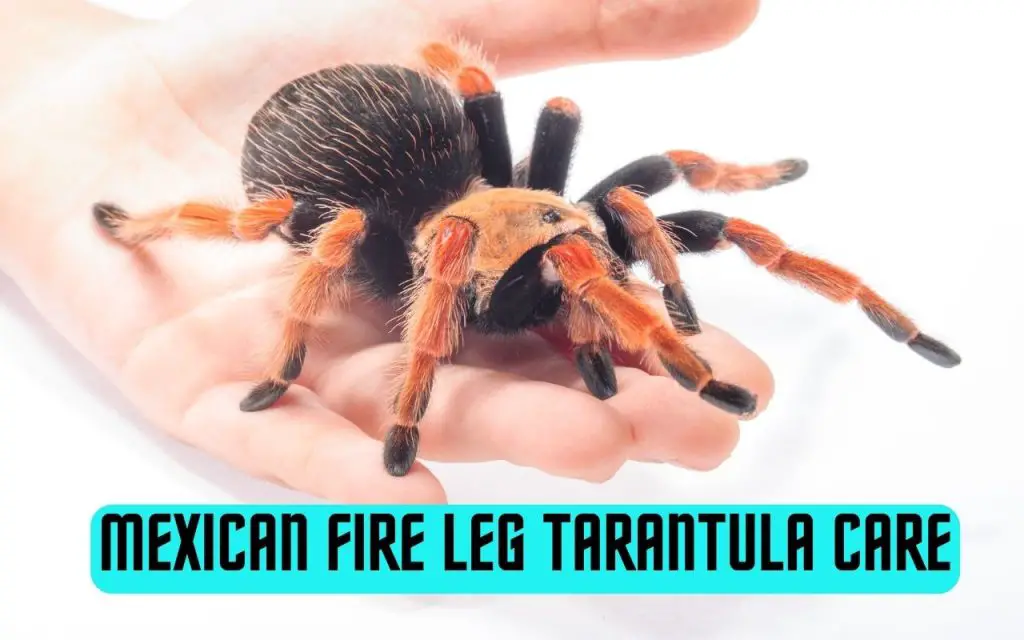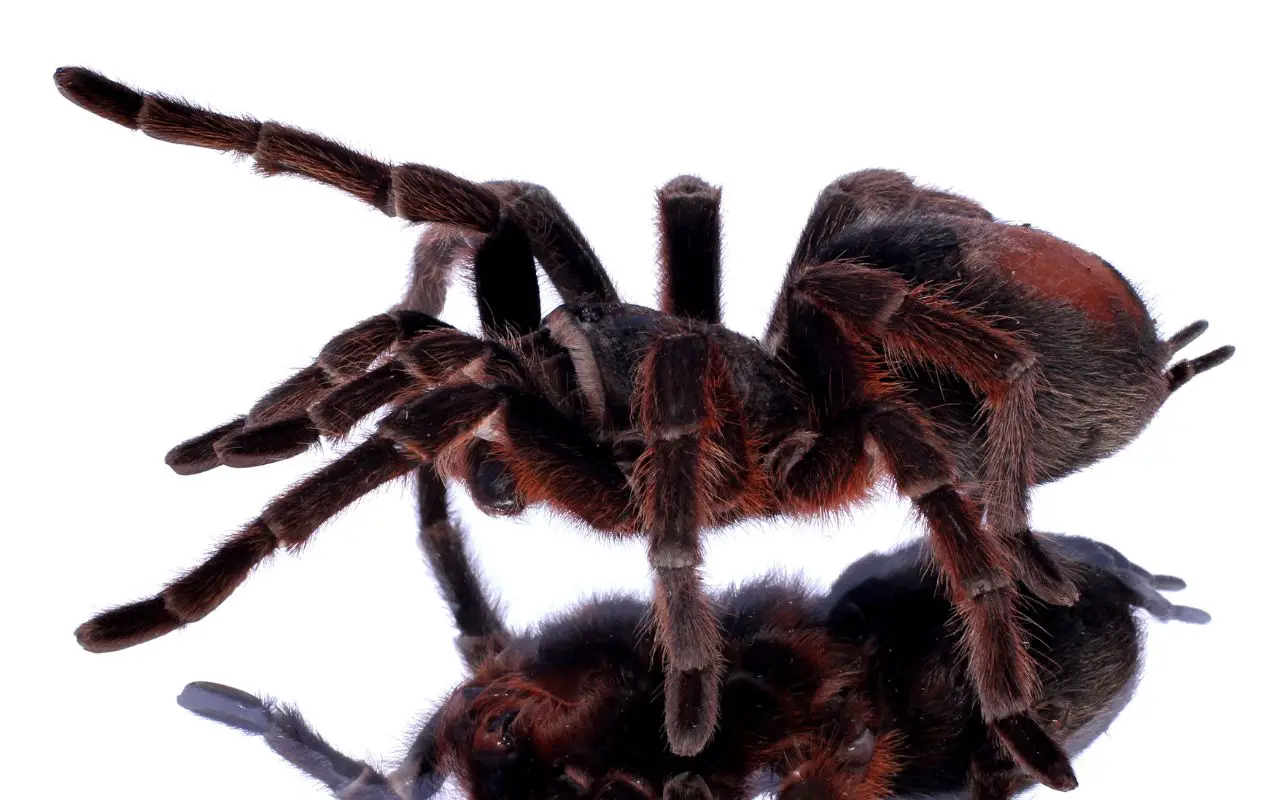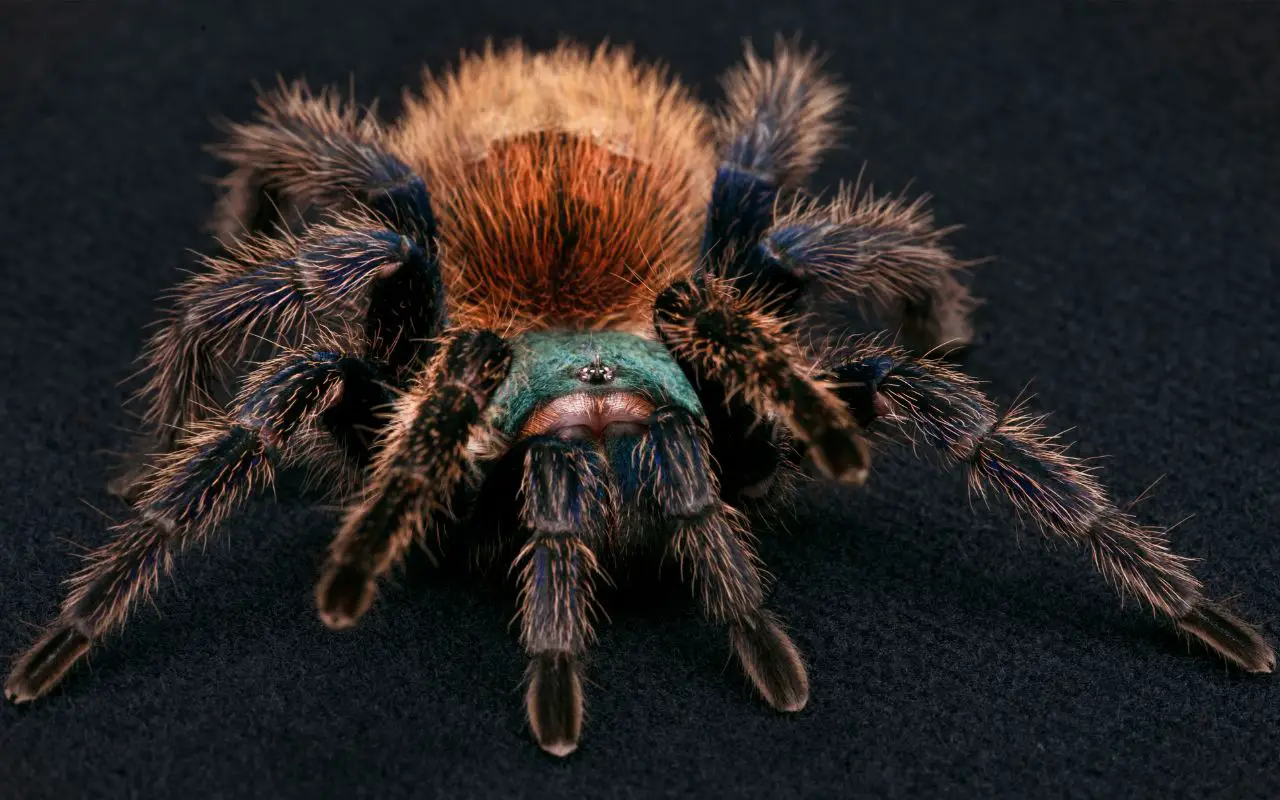Today, we will be taking a look at Mexican Fire Leg Tarantula care (Brachypelma boehmei). This is a species I’ve been keeping for several years now, and if it isn’t already one of your favorites, I can guarantee that it will be soon!
Originating from the vibrant landscapes of Mexico, the Mexican Fire Leg Tarantula, has mesmerized tarantula keepers worldwide. With a strikingly black body contrasted by vibrant ruby red hairs on its legs, this terrestrial species is an absolute sight to behold. Not to mention, their relatively calm nature makes them an excellent choice for beginners and experienced hobbyists alike.
Allow me to guide you through my journey of caring for this beautiful creature and share with you the comprehensive care techniques I’ve developed over the years.
Mexican Fire Leg Tarantula: Understanding Their Habitat
The Mexican Fire Leg Tarantula is a terrestrial species known for its burrowing behavior. This is an essential aspect to remember while setting up their enclosure. Personally, I’ve found that a ten-gallon tank provides ample room for them to roam around and exhibit their natural behaviors, like burrowing.
Ensuring the substrate in their enclosure is about three to four inches deep allows them to indulge in their love for burrowing. I always prefer using coconut fiber or a peat mix, but you could use any other substrate as long as it’s pesticide-free and safe for your pet.
To give you a better idea, let’s look at a detailed list of essentials for your tarantula’s enclosure:
- A hiding spot: Your tarantula will require a secure spot to retreat to, especially during molting periods. This could be a hollow log, a piece of cork bark, or even a terracotta pot turned on its side.
- A shallow water dish: This is essential for ensuring that your tarantula stays hydrated. Remember to clean and refill it regularly to prevent the growth of bacteria and other harmful organisms.
- Substrate: A good amount for burrowing. Coconut fiber or a peat mix works great, but remember to steer clear of any pesticide-treated materials.
- Suitable enclosure size: Make sure your tarantula has enough space to move, roam, and burrow comfortably. Overcrowding can cause unnecessary stress.
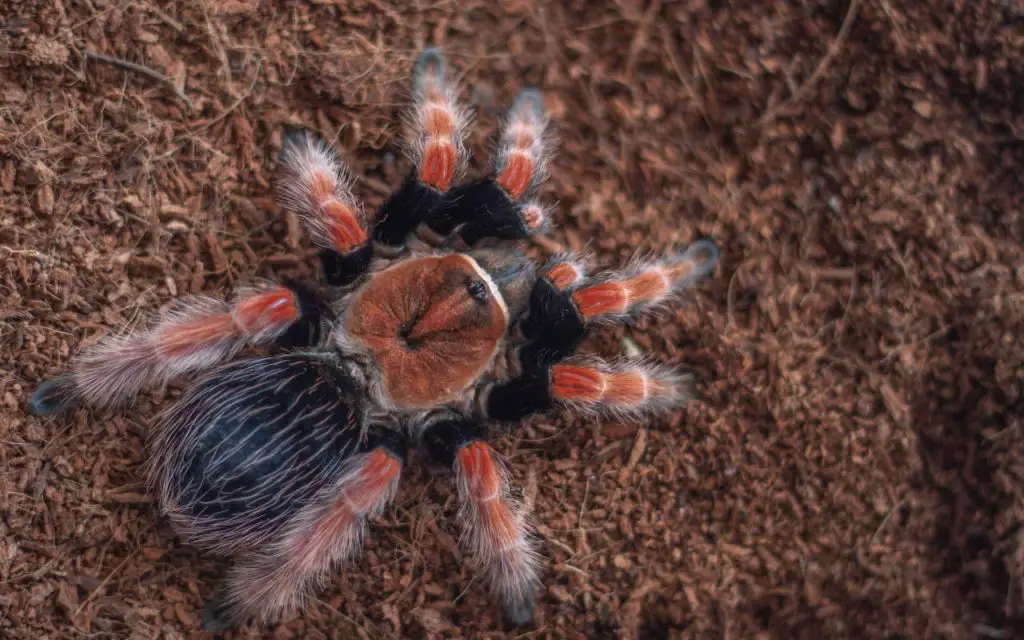
Feeding and Nutrition: What Does a Mexican Fire Leg Tarantula Eat?
Feeding a Mexican Fire Leg Tarantula is an exciting process and quite straightforward. Being carnivorous, they thrive on a diet of live insects. In my experience, crickets, mealworms, and roaches have been excellent sources of nutrition for them. I usually feed my tarantula once a week, and it’s important to remember that the size of the meal should be proportional to the size of your tarantula.
Observing a Mexican Fire Leg Tarantula catch its prey can be quite the sight. They are ambush predators who wait for their prey to wander by before launching a lightning-fast attack. Be sure to remove any uneaten food after 24 hours to maintain the cleanliness of the enclosure and prevent unwanted smells.
- Monday: Feeding day – 3 or 4 suitable-sized crickets or a couple of Dubia roaches
- Tuesday: Clean up – I remove any uneaten food
- Wednesday: Rest day
- Thursday: Enclosure maintenance – I do a spot clean and check the overall condition of the enclosure
- Friday: Rest day
- Saturday: I refill the water dish and check the humidity and temperature levels
- Sunday: Rest day
*Note: this schedule is for an adult. Spiderlings can be fed two to three times a week. If an adult isn’t interested – it’s no big deal. Just skip that week and try again in 7 days.
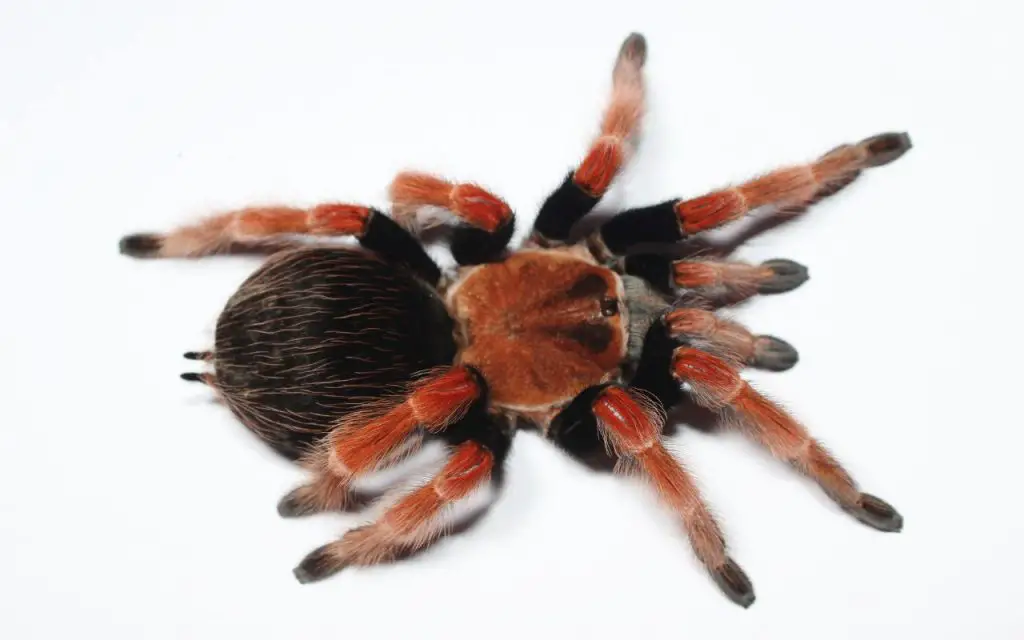
Humidity
The Mexican Fire Leg Tarantula (Brachypelma boehmei) hails from the dry scrublands of Mexico, so maintaining a suitable humidity level is essential to mimic its natural habitat. The humidity level for a Fire Leg Tarantula should generally be kept between 50-70%.
A crucial part of their habitat setup includes providing a shallow water dish to help maintain this humidity level. While overfilling is discouraged, ensuring the dish always contains clean water will help sustain a humidity-rich environment that your tarantula will love.
However, managing humidity is a delicate balance. Overly damp conditions should be avoided as they can potentially lead to mold growth, which is harmful to your tarantula. It could also attract mites and other pests. Remember, the aim is to create a comfortable habitat, not a wet one. The substrate should be dry, with only the water dish adding to the enclosure’s overall humidity. Regular monitoring of humidity levels, alongside proper ventilation, will help ensure a healthy and happy life for your Mexican Fire Leg Tarantula.
Handling Your Mexican Fire Leg Tarantula
While it’s crucial to mention that tarantulas are not pets to be handled frequently, the Mexican Fire Leg Tarantula’s docile nature does allow for occasional, gentle handling. Always be slow and calm to avoid causing any stress to your eight-legged friend.
Overall, this species doesn’t tend to bite, but it is fast-moving, and some will also kick hair at you if you annoy them. In truth, the biggest risk when handling one is if it falls and injures itself. Personally, I recommend only handling if you are very confident, and only when sitting down if you do so.
Mexican Fire Leg Care: Final thoughts…
Why I like this species:
- Many Fire Leg Tarantulas have a very deep orange color. It’s really hard to find a species with a more vibrant red/orange tone.
- It is very hardy and long-lived. Females have lived to over 25, and according to a-z-animals.com, they regularly live from 20 to 25 years in captivity.
- Captive-bred individuals are easy to source, and often come at a reasonable price – especially spiderlings.
Things to consider before buying:
- In my opinion, this species is ever-so-slightly more defensive than some other Mexican Tarantula species. They may occasionally kick urticating hairs from their abdomen at you.
- Urticating hairs are particularly hazardous for people with asthma. If this is you, consider an old-world species instead.
Nurturing a Mexican Fire Leg Tarantula has been an incredibly rewarding experience for me. Their unique appearance, calm temperament, and relatively simple care requirements make them an exceptional choice for any arachnid enthusiast.
I hope this comprehensive guide helps you understand the needs of a Mexican Fire Leg Tarantula better, encouraging responsible and thoughtful care for these fascinating creatures. Always remember, the joy of tarantula keeping comes with the responsibility of providing the best possible environment for them to thrive. So, continue learning, stay observant, and enjoy your journey in the captivating world of tarantulas!
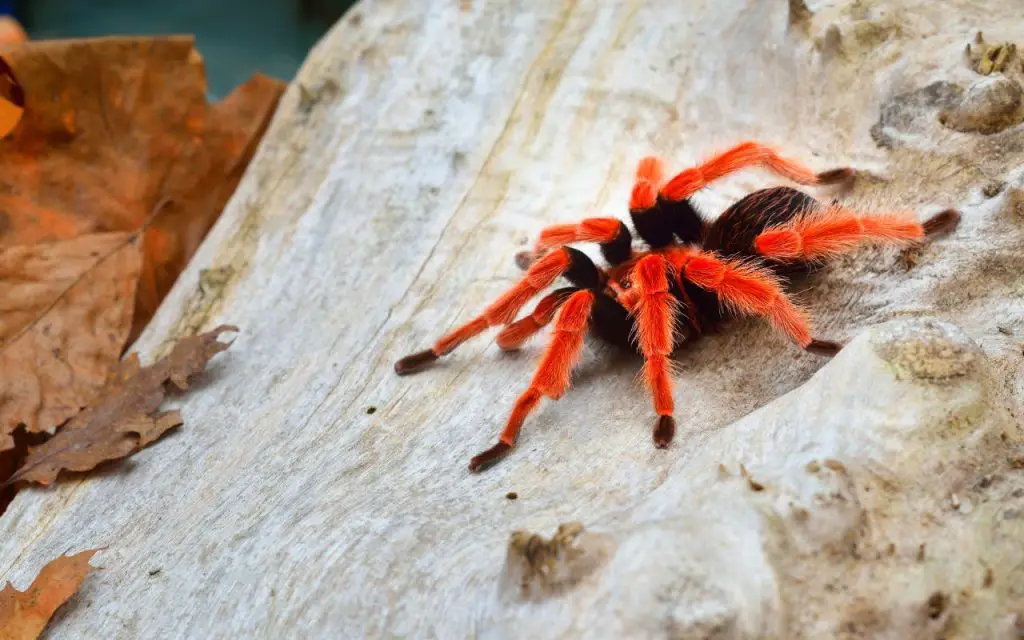
How big do Mexican fireleg tarantulas get?
Average females get 5-6 inches (12-15cm) in legs pan. Males are smaller and slimmer, with many get to around 5 inches in leg span, but appearing more lightly built. Generally, Fire Leg Tarantulas grow more slowly than many of their relatives, and your pet may take as long as 5 years to reach full size.
How often do you feed a Mexican fireleg tarantula?
I feed spiderlings two to three times a week. This is necessary because of how fast they are growing. As they mature, I feed them less and less. When fully-grown, they can be fed once every week or so. Bear in mind that they will refuse food when preparing to molt, which is normal.
Are Mexican fireleg tarantulas good for beginners?
Mexican Fire Leg Tarantulas are great for beginners. They are hardy, easy to maintain, and incredibly long-lived. Their only drawback is that some of them are slightly less docile than other New World species. If you a spider you can handle easily, spiders like the Texas Tan or Arizona Blonde would be better.

